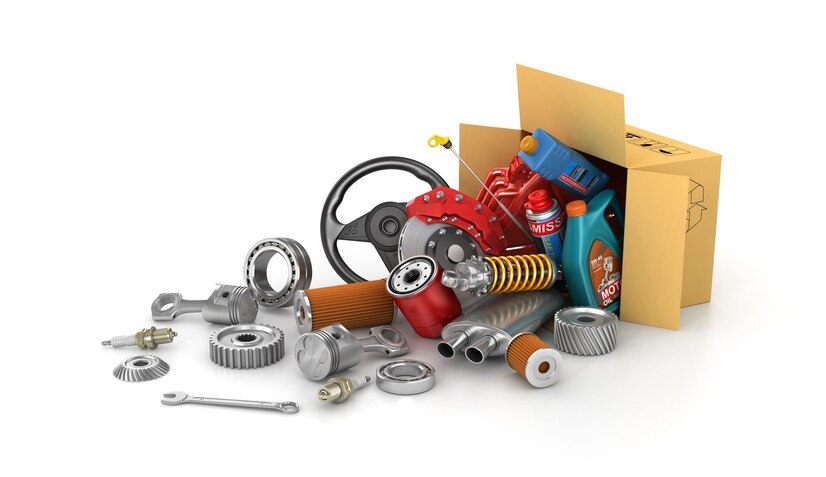Technical Service Bulletins: Key Insights and Importance

Strong 8k brings an ultra-HD IPTV experience to your living room and your pocket.
The traditional methods of identifying and finding problems in a model include two forms of communication: technical service bulletins (TSB) and recall. Each of these methods of communication is designed to address problems in automotive, but both follow different channels.
To understand which communication methods are used for which situation, let us understand the meaning of TSB and Recalls, their use, as well as OEMs' dependency on digital bulletin software.
What are Technical Service Bulletins?
Technical service bulletins are formal documents disseminated by Original Equipment Manufacturers (OEMs) to describe common malfunctions or defects within a particular model. TSBs guide the technicians on the diagnosis and correction of defects, thereby helping them to work more accurately and make fewer hours in diagnostics.
TSBs go a long way in making vehicle maintenance both efficient and cost-effective for the manufacturers as well as the service centers. With the information system, management and access become even smoother because the system brings a centralized update and allows technicians to have the most current and relevant information at their fingertips.
What Is Meant By Recalls?
Recalls are governed actions of the manufacturing or regulatory parties to deal with safety defects and non-conformance towards the legal measures in the motor vehicle or other product. Compared to TSBs, recalls are compulsory and largely concentrate on the serious flaws that might pose a risk to the user.
They do not involve minor concerns, which oftentimes make up TSBs. Most often, recalled automotive problems include malfunctioning airbags, faulty braking issues, or steering defects. The manufacturers will have to inform the affected customers and replace or repair the products at no cost to them. Recall is vital because it ensures vehicle safety, and regulatory compliance, and protects the consumers and the brand's reputation.
What Is The Application of the Technical Service Bulletin?
Some of the key considerations that allow for the application of a technical service bulletin to vehicle maintenance and service procedures are discussed below:
1. Technician Support
A TSB provides technicians with highly specific information about the steps they need to undertake to resolve any specific problems that may be associated with a given kind of vehicle. This type of guidance can expedite the diagnosis and eventual servicing of the vehicle's problems.
2. Standardized Repair
TSBs outline standardized steps that can go on to enhance the level of uniformity of repairs that may be executed by various service centers. This minimizes the prospects of mistakes and improves service quality.
3. Cost Effectiveness
TSBs avert any duplication of part replacement or repair, thus saving time and cutting the cost of time and money for the technician and the customer.
4. Non-Safety Issues
While recalls comprise safety issues, TSBs majorly comprise non-safety issues such as improvements in performance, software updates, or minor mechanical problems.
5. Better Customer Satisfaction
This is the fact that OEMs gain customer trust in getting the problem solved early and effectively through TSBs, with better performance of the vehicle and fewer repeat visits.
Now that we understand the use of TSB and its application, let us understand how it is beneficial for OEMs.
Why Is TSB Software Essential For OEMs?
TSBs offer OEMs several significant benefits to ensure excellent quality products and, more importantly, customer satisfaction. Here is a look at how TSBs are helpful to OEMs:
1. Efficient Troubleshooting
A. Uniformed Solutions: TSBs offer technicians step-by-step procedures so that the same problem is repaired the same way in every dealership service center. This ensured no scrambling of repaired and maintained vehicles.
B. Better Diagnosis: With TSBs, technicians do not have to spend too much time troubleshooting popular problems. It furnishes the bulletins with specified details on the symptoms, diagnostics, and corrective actions. This reduces the whole repair process.
2. Reduced Warranty Expenses
A. Cost Control: TSBs issued by OEMs avoid unnecessary part replacement or service procedures that may inflate the cost during the warranty period and reduce repairs under warranty, to leave happy customers with on-time repairs and utilizing available resources better.
B. Prevention of Major Problems: TSBs will allow minor issues to be addressed before becoming major, more costly problems. Early intervention through TSBs will prevent minor repairs that result in more extensive expensive repairs and could lead to costly recalls or customer dissatisfaction.
3. Better Product Quality and Brand Reputation
A. Continuous Improvement: TSBs help the OEM to make continuous improvements in the functioning of a vehicle after it has been sold by providing updates or corrections for issues that were either known or encountered. This ensures that their product continues running well and prolongs the perception of quality.
B. Customer Satisfaction: OEM firms that feature proactive service in the form of a TSB of known issues illustrate interest in customer service. This helps build brand loyalty and trust by ensuring customers continue coming back for future purchases or services.
C. Protect the Brand: TSBs are possible because in many cases, the issues get addressed on time; otherwise, if issues were left unaddressed, it would have left behind an unhealthy black eye on the OEM's brand. It is one way of maintaining the image of quality and reliability for customers.
4. Efficient Communication to Dealerships and Service Outlets
A. Effective Communication: TSBs ensure direct communication between the OEM and the service centers, thus enabling the provision of the information needed by the technicians to solve the given problems. The communication can be ensured as devoid of malpractice and minimal error rates because the correct information is passed to the technicians.
B. Training and Skill Development: TSBs can act as a training tool for technicians to achieve familiarity with a specific issue and the repair techniques that can be used for this. It decreases the learning curve and gets technicians adequately equipped to do their jobs when the same issue crops up again and again.
C. Superfluous Recall Prevention: The TSB is meant to assist and close issues not related to safety but that might be deemed fit for some form of corrective action that does not reach the level of a recall. OEMs benefit by avoiding costly recalls—those usually carrying an associated connotation of safety concern and are often regulated by a government agency.
D. Targeted Repairs: Instead of a blanket recall, the OEM uses TSBs to correct a specific issue in a specific vehicle model. Consequently, this will not inconvenience the large customer base but still correct the issue.
5. Enhanced Dealer and Technician Support
A. Technical Clarity Provision: TSBs are self-explanatory, providing dealers and service centers with a detailed technical approach to how to handle a particular problem. This mostly eliminates confusion about the process, and technicians mostly obtain everything at their disposal to solve the particular problem.
B. Streamlined Workflow: Through the adoption of standardized steps for TSBs, technicians avoid and omit unnecessary steps, thus ensuring a more streamlined workflow and productivity.
6. Data Collection and Product Development
TSBs are a source of rich information on problems occurring in a certain vehicle model. This information is vital to the development teams in an OEM to develop better product models while avoiding certain problems that could reappear in subsequent models.
The data obtained through TSBs is also helpful for making proper decisions by the OEMs in terms of design changes so that such issues are avoided in future models of vehicles. In a way, it is a continuous improvement for both the OEMs and the customers.
7. Industry Standards Compliance
Even though a TSB is different from a safety recall, it makes sure that the OEM finds and resolves issues related to a vehicle's performance in compliance with the requirements laid down by regulatory authorities and adherence to industry norms. This should help OEMs stay away from a penalty against their company for mishandling the issue and be in good standing with regulatory bodies.
Wrapping It Up
In conclusion, TSBs have come up as an important source that provides solutions to non-safety-related issues of vehicles while giving loads of benefits to OEMs and service centers. They ensure smooth tackling of problems, standardized repair procedures, and control of expenses with improved customer satisfaction through prompt and appropriate solutions.
TSBs are significant because, through them, OEMs can keep their products of excellent quality and maintain the prestige of their brand by processing such instances well before time. They also support service center communication by reducing errors and enhancing the training of technicians; this is further enhanced with the state-of-the-art digital bulletin system.
TSBs markedly help in managing and availability of TSBs for all stakeholders to tap into the latest information. TSB is a vital component for achieving better vehicle performance and sustaining success within OEMs in the automotive industry.
Note: IndiBlogHub features both user-submitted and editorial content. We do not verify third-party contributions. Read our Disclaimer and Privacy Policyfor details.







